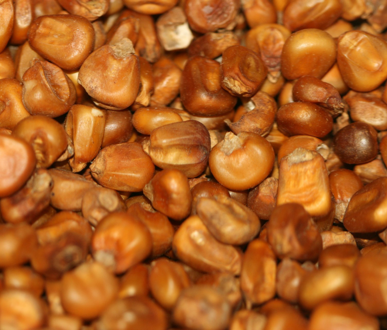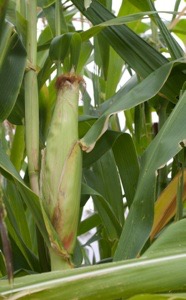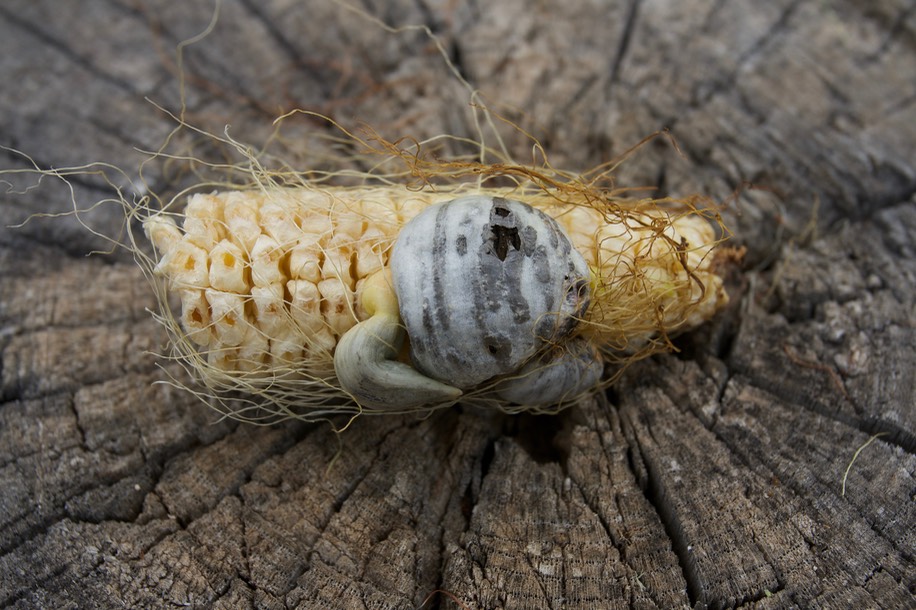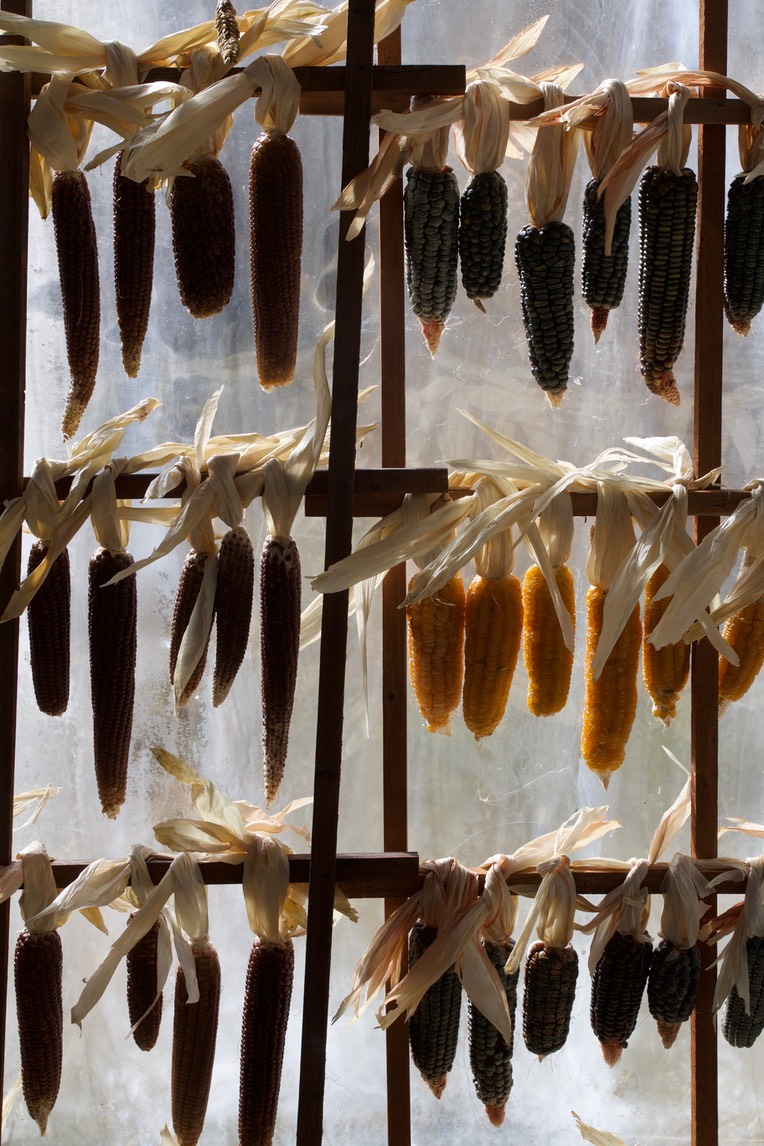
There are two general varieties of corn; sweet corn, which is sugar-rich, and field corn which has less sugar - and is usually used as non-human animal feed. Humans typically eat sweet corn. The photograph above and the one immediately below are from corn stock found at the ancient cliff dwelling site at Mesa Verde.

The domestication of corn is thought to have started sometime between 7,500 and 12,000 years ago in Mexico. Numerous varieties were developed by the Olmec and Mayan cultures and it had spread through much of the Americas by 3500 BP.

In remote areas like the slopes of Volcán de Fuego de Colima in the state of Colima (Mexico) it is possible to see farmers growing very old varieties of corn. Varieties, like this flint corn from the 1930’s (image right), have a distinctly different (better) taste to that of “supermarket” corn.
Genetically engineered corn pollen is mixing with traditional stocks - effectively ruining the value of such stocks. Because of the relative ease with which its genetic structure can be modified, corn is used to study the evolutionary process.
Corn Smut, photo below, is caused by a fungus which is called huitlacoche in Mexico, where it is regarded as a delicacy and is used as an ingredient in quesadillas and soups. The use of huitlacoche has its origins in Aztec cuisine (perhaps earlier). Corn smut contains much more protein and lysine than is found in uninfected corn.

Corn is the most widely grown crop in the Western Hemisphere. About 60% of that grown in the Americas is consumed by animals, the rest is used in the production of ethanol.

Corn is prepared in numerous manners, including:
- Boiled or steamed as “corn on the cob”
- Dried and ground into cornmeal which is used in a variety of baked goods
- Corn meal is sometimes made into a porridge - polenta in Italy, grits in the American South, etc.
- Some varieties are heated to the point where the kernel explodes - popcorn
- Both alcoholic and non-alcoholic drinks are made from corn mash
- Corn kernels are flaked and used as a breakfast cereal
- Kernels are soaked in lye and prepared as hominy
- Corn is pressed to make corn oil which is used in cooking
Corn kernels are, on average, 76% water by weight and about 19% carbohydrate.
The illustration, to the left, shows the corn plant in its many facets -- by Franz Eugen Kohler in 1897.
The variety of popcorn shown below, and to the left, is Chapalote, the oldest corn variety yet found in the United States. These ears were grown in our home garden. Meal made from the kernels of this variety is especially tasteful.


